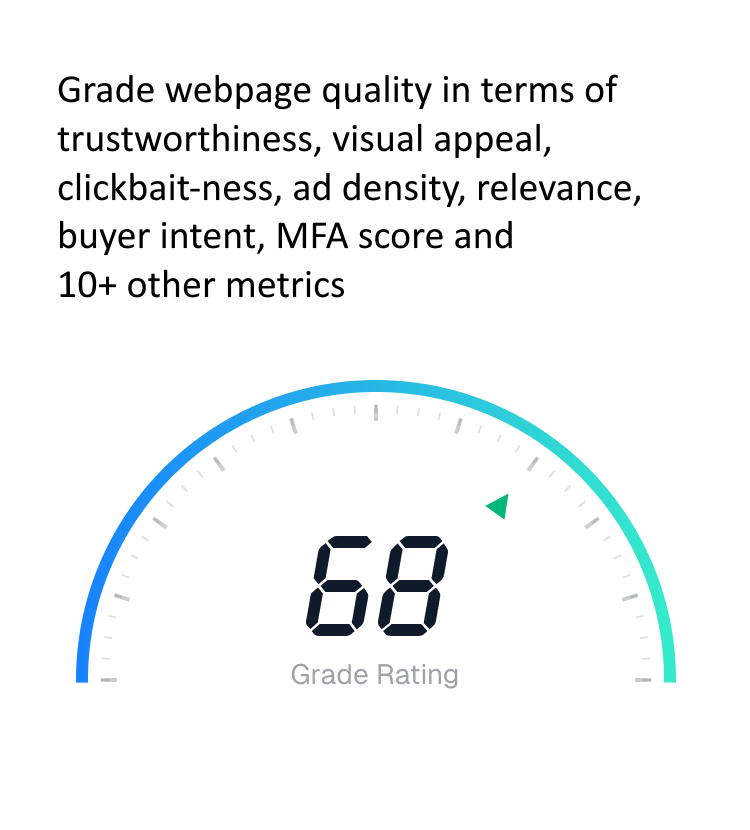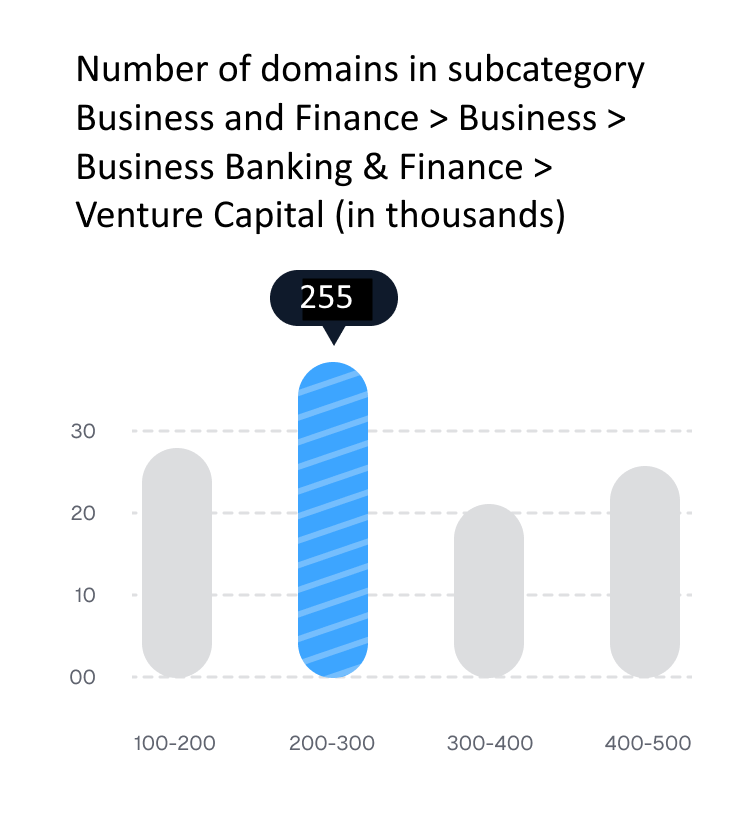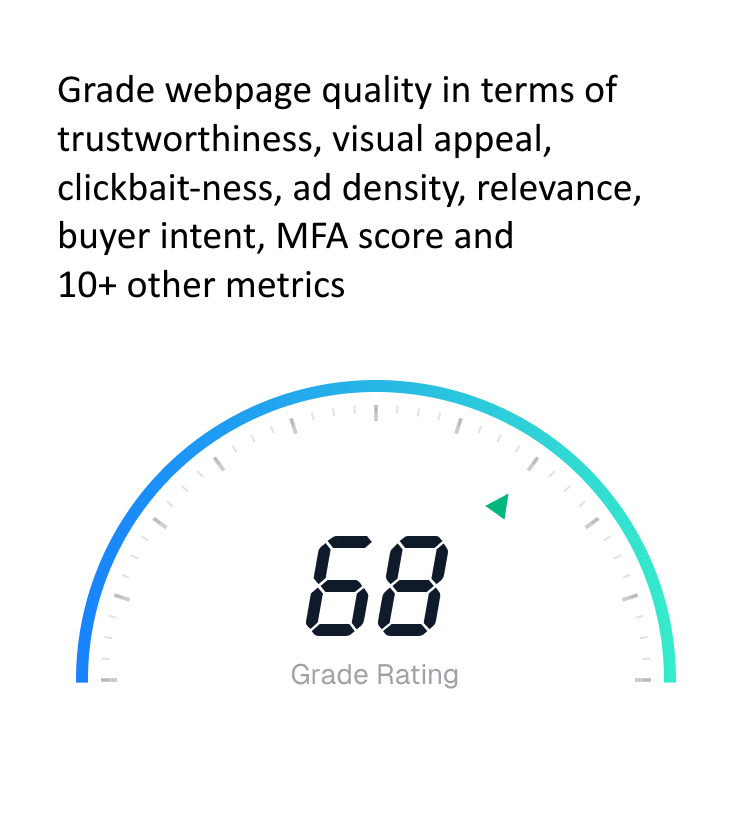Transform basic URL categorization into comprehensive content intelligence with buyer personas, topics, entities, sentiment analysis, and competitive insights.
Try Live DemoContent enrichment data goes far beyond simple URL categorization, providing deep intelligence about the content, audience, entities, sentiment, and business context of any website. While categorization tells you what industry or topic a website covers, enrichment data reveals who the audience is, what they care about, how they feel, what topics are being discussed, and what companies are relevant to the content.

Our enrichment data transforms URLs from simple addresses into rich data objects containing dozens of valuable attributes. This comprehensive intelligence enables sophisticated applications in marketing automation, competitive intelligence, content recommendation, audience targeting, and business intelligence that would be impossible with categorization alone.
Every URL processed through our API returns not just category labels, but a complete intelligence package including buyer personas with confidence scores, key topics and themes extracted from the content, named entities recognized and classified by type, sentiment analysis for content and specific entities, related keywords and semantic concepts, competitor and similar company identification, social media profiles discovered on the site, technology stack detection, audience demographics and characteristics, and contextual metadata about the page and domain.
Enrichment Data Types
Buyer Personas Detected
Entity Types Recognized
Enrichment Processing
Understanding who your audience is represents one of the most valuable insights for marketing, sales, and product teams. Our buyer persona detection analyzes website content, messaging, products, services, and design to identify the likely audience segments visiting and engaging with the site.
We maintain a comprehensive library of over 50 distinct buyer personas covering professional roles, interest-based segments, demographic groups, and behavioral patterns. For each URL analyzed, we return all relevant personas with confidence scores indicating the likelihood that each persona represents a significant portion of the site's audience.

Professional and Role-Based Personas: We identify audiences based on professional roles and job functions including executives and business owners, technology professionals and developers, marketing and sales professionals, financial professionals and investors, healthcare practitioners, educators and academics, creative professionals, engineers and technical specialists, and many others. Each persona comes with confidence scoring indicating how strongly the content appeals to that audience.
Interest and Hobby-Based Personas: Beyond professional roles, we identify audiences defined by interests and passions such as tech enthusiasts and early adopters, fitness and health-conscious consumers, automotive enthusiasts, travel lovers, food and cooking enthusiasts, gaming and entertainment fans, fashion and beauty followers, home improvement and DIY practitioners, investment and finance enthusiasts, and outdoor recreation and adventure seekers.
Behavioral and Intent-Based Personas: We also detect audiences based on buying behaviors and intents including e-commerce shoppers and online buyers, bargain hunters seeking deals and discounts, luxury and premium consumers, comparison shoppers researching options, impulse buyers responding to emotional appeals, B2B decision makers, small business owners, and enterprise procurement professionals.
Practical Applications: Buyer persona data enables numerous high-value applications including personalized content recommendations matched to user interests, targeted advertising campaigns optimized for specific audience segments, product recommendations aligned with persona preferences, content strategy informed by actual audience composition, lead scoring and qualification based on persona match, account-based marketing targeting decision makers, and competitive analysis understanding competitor audience positioning.
While categories provide broad classification, topic extraction identifies specific themes, subjects, and concepts discussed on a page or site. Our advanced natural language processing analyzes content to extract key topics with supporting evidence showing where and how each topic appears.
Topic extraction provides granular insight into what a website actually discusses beyond broad category labels. For news sites, we identify specific stories and angles being covered. For product pages, we extract features and benefits being emphasized. For blog posts, we identify the main arguments and supporting points. For corporate sites, we understand value propositions and messaging themes.
Each extracted topic includes the topic phrase or concept, supporting evidence and quotes from the content, prominence scoring indicating topic importance, and context explaining how the topic is used. This structured approach to topic extraction enables sophisticated content analysis, competitive monitoring, and content recommendation systems.

Applications of Topic Data: Topic extraction enables content discovery systems helping users find relevant articles and resources, competitive intelligence tracking what competitors emphasize and how messaging evolves, content gap analysis identifying topics competitors cover but you don't, SEO optimization understanding topic coverage and semantic relationships, content planning identifying trending topics and audience interests, news monitoring tracking how stories develop across sources, and brand monitoring understanding context around brand mentions.
Named Entity Recognition (NER) identifies and classifies specific entities mentioned in website content including people, companies, products, locations, organizations, dates, and many other entity types. Our NER system recognizes over 100 entity types with high accuracy across multiple languages.
Entity extraction transforms unstructured text into structured data, enabling sophisticated analysis and applications. By identifying which companies, products, people, and places are mentioned on a website, you gain deep context about the content's subject matter, business relationships, competitive landscape, and geographic focus.
Core Entity Types: Our system identifies organizations and companies mentioned, people and notable individuals, products and services, locations including cities, countries, and regions, dates and time references, monetary values and currencies, percentages and statistics, technologies and platforms, events and conferences, brands and trademarks, legal entities and agreements, and domain-specific entities like medical terms, chemical compounds, or financial instruments.
Each identified entity includes the entity text as it appears, entity type classification, confidence score for the classification, context showing how the entity is used, and when applicable, entity linking to knowledge bases for disambiguation. This rich entity data enables knowledge graph construction, relationship mapping, and semantic analysis.
Entity Applications: Named entity data powers competitive intelligence systems tracking competitor mentions and partnerships, relationship mapping understanding business ecosystems and partner networks, content recommendation systems finding related content through shared entities, knowledge management systems organizing information by entities, investment research identifying company relationships and market dynamics, media monitoring tracking entity mentions across sources, fact checking verifying entity information and relationships, and semantic search enabling entity-based queries and filtering.
Sentiment analysis determines the emotional tone and opinion expressed in content, ranging from positive to negative with nuanced understanding of neutrality, mixed sentiment, and intensity. Our sentiment analysis operates at multiple levels, providing both overall content sentiment and entity-level sentiment for specific companies, products, or topics mentioned.

Multi-Level Sentiment Analysis: We provide sentiment at several granularities including document-level sentiment capturing the overall tone of a page or article, entity-level sentiment showing how specific companies, products, or people are portrayed, aspect-level sentiment identifying sentiment toward particular features or attributes, and comparative sentiment understanding relative positioning of alternatives.
Sentiment scores range from -1.0 (very negative) through 0.0 (neutral) to +1.0 (very positive), with confidence scores indicating certainty. We also identify sentiment intensity (mild, moderate, strong), subjectivity versus objectivity, and emotional categories beyond simple positive/negative distinctions.
Sentiment Analysis Applications: Sentiment data enables brand reputation monitoring tracking public perception and identifying issues early, product feedback analysis understanding customer satisfaction and pain points, competitive analysis comparing sentiment toward your brand versus competitors, content moderation identifying negative or controversial content, crisis detection spotting emerging problems through sentiment shifts, review analysis aggregating opinions from multiple sources, influencer identification finding positive advocates and addressing critics, and customer experience optimization understanding emotional journey and friction points.
Beyond category labels, we extract relevant keywords and semantic concepts that capture the essence of website content in actionable terms. Our keyword extraction combines statistical analysis with semantic understanding to identify the most significant and relevant terms.
Extracted keywords represent the vocabulary and terminology used on a website, providing insight into how the site positions itself, what terminology resonates with its audience, and what concepts it emphasizes. This keyword intelligence informs SEO strategies, content optimization, ad targeting, and competitive analysis.
Our keyword extraction identifies primary keywords representing core topics, secondary keywords providing context and depth, branded keywords specific to companies and products, long-tail keywords representing specific queries and intents, semantic concepts representing abstract ideas, technical terminology and jargon, and related keywords showing semantic associations.
Each keyword includes the keyword term, relevance score indicating importance, search volume estimates when available, competitive metrics, and semantic relationships to other keywords. This comprehensive keyword intelligence enables sophisticated SEO, content strategy, and marketing applications.
Understanding the competitive landscape and similar companies represents valuable business intelligence. Our system automatically identifies competitors, similar companies, and related businesses based on content analysis, industry positioning, audience overlap, and product similarities.

For each URL analyzed, we return a list of similar and competing companies with explanations of the relationship and similarity basis. This competitive intelligence is extracted from the website's own positioning, identified through content and entity analysis, inferred from industry patterns and market structure, and validated through multiple data sources and signals.
Competitive Intelligence Applications: Competitor data enables market mapping understanding industry structure and key players, competitive monitoring tracking competitor activities and positioning, partnership identification finding potential partners and collaborators, investment research identifying competitive dynamics and market opportunities, sales intelligence understanding prospect's alternatives and competitive set, product positioning differentiating against known competitors, acquisition targeting identifying potential acquisition candidates, and market entry strategy understanding existing players in new markets.
Understanding what technologies, platforms, and tools a website uses provides valuable intelligence for sales, marketing, and technical teams. Our technology detection identifies over 2,000 different technologies across dozens of categories including content management systems, e-commerce platforms, analytics tools, advertising technologies, programming languages and frameworks, hosting and infrastructure, security technologies, payment processors, customer service tools, and marketing automation platforms.
Technology detection enables technology-based targeting for B2B sales and marketing, competitive analysis understanding competitor technology choices, lead qualification assessing technical sophistication, integration planning understanding compatibility with your tools, security assessment identifying potential vulnerabilities, migration opportunity identification finding prospects using legacy technologies, and market research tracking technology adoption trends.
We automatically identify social media profiles and online presence signals including Twitter/X profiles and handles, Facebook pages and groups, LinkedIn company pages and profiles, Instagram accounts, YouTube channels, TikTok profiles, Pinterest boards, Reddit communities, and other social platforms, as well as app store presence and mobile applications.
Social media detection enables multi-channel engagement reaching prospects across platforms, social listening monitoring conversations and sentiment, influencer identification finding key voices and advocates, audience research understanding follower demographics and interests, competitive social analysis comparing social presence and engagement, and content distribution identifying sharing and amplification channels.
Beyond specific buyer personas, we provide broader demographic insights about the likely audience including age ranges and generational segments, gender distribution and targeting, geographic focus and regional characteristics, income and affluence indicators, education level indicators, professional versus consumer orientation, and lifestyle and value indicators.

Demographic data complements persona detection by providing quantifiable audience characteristics useful for media planning and buying, targeting and segmentation strategies, product development and positioning, content strategy and messaging, market sizing and opportunity assessment, and competitive audience analysis.
We identify the primary language or languages used on a website, detect multilingual content and language availability, identify regional variants and localization approaches, and recognize language formality and style characteristics. Language detection enables international expansion planning, localization opportunity identification, competitive analysis across regions, audience reach estimation, and content strategy optimization.
Our enrichment data includes detection of user intent signals and buying intent indicators based on content characteristics, calls to action, pricing information, transactional features, and other signals suggesting where users are in the buying journey. We identify informational intent for research and learning, navigational intent for finding specific sites, transactional intent for making purchases, commercial investigation intent for comparing options, and problem-solving intent for addressing needs.
Intent detection enables lead scoring and qualification, content personalization matched to journey stage, advertising optimization targeting high-intent audiences, sales prioritization focusing on ready buyers, and funnel optimization understanding intent progression.
We generate comprehensive tag clouds summarizing content themes and topics in a condensed, scannable format. Tags represent the most significant concepts, keywords, brands, and topics on a website, providing at-a-glance understanding of content focus. Tag clouds enable rapid content screening, topical clustering and grouping, search and discovery interfaces, content recommendation systems, and trend identification across content sets.
When present and detectable, we extract legal entity information and contact details including company legal names, registered addresses, contact information, registration numbers and identifiers, terms of service and privacy policy locations, and business structure indicators. Legal entity data enables compliance verification, business validation, entity resolution and deduplication, contact information enrichment, and corporate structure understanding.
While often considered separately from content enrichment, our security and threat detection is delivered alongside enrichment data, providing comprehensive risk assessment including malware and virus detection, phishing and social engineering identification, deceptive practices and fraud indicators, security vulnerabilities and exposures, spam and abuse signals, and content safety concerns.
Security enrichment enables brand safety enforcement, threat intelligence and security operations, compliance and risk management, user protection and filtering, and reputation scoring and risk assessment.
Enrichment data is returned automatically with every API request, requiring no special configuration or additional calls. The comprehensive enrichment data is included in the standard API response alongside categorization data, formatted as structured JSON for easy parsing, organized by enrichment type for selective consumption, and includes confidence scores and metadata for quality assessment.
You can configure which enrichment fields to return, balancing comprehensiveness with response size and processing needs. Most customers start by consuming all enrichment data, then optimize based on which fields provide the most value for their specific use case.
Marketing Automation Platform: A marketing platform uses enrichment data to automatically tag and segment prospects based on buyer personas, trigger personalized email campaigns based on detected topics and interests, score leads based on intent signals and audience match, identify potential customers using competitor technologies, and recommend content matched to visitor interests and personas. The enrichment data transforms basic URL tracking into comprehensive lead intelligence.
Competitive Intelligence System: A market research platform leverages enrichment data to track competitor messaging, positioning, and topic emphasis over time, identify new competitors and similar companies automatically, analyze sentiment toward competitors across sources, monitor technology adoption and platform migrations, and map competitive landscapes with entity relationship graphs. Enrichment data enables automated, scalable competitive intelligence gathering.
Content Recommendation Engine: A media platform uses enrichment data to match content to user interests through persona and topic matching, recommend related articles through entity and keyword relationships, personalize content ordering based on detected audience characteristics, identify trending topics and emerging themes, and create topic-based content clusters and collections. Enrichment data powers sophisticated, relevant recommendations beyond simple category matching.
Our enrichment data maintains high accuracy through continuous model training, validation against human-labeled datasets, customer feedback integration, and ongoing refinement. We regularly expand our entity libraries, persona definitions, and detection capabilities based on evolving internet content and customer needs.
Quality metrics and confidence scores accompany all enrichment data, allowing you to apply quality thresholds appropriate for your use case. High-confidence enrichments can be used for critical business decisions, while lower-confidence data might inform exploratory analysis or recommendations.
See how our enrichment data transforms basic URLs into comprehensive business intelligence.
Try Free Demo Now